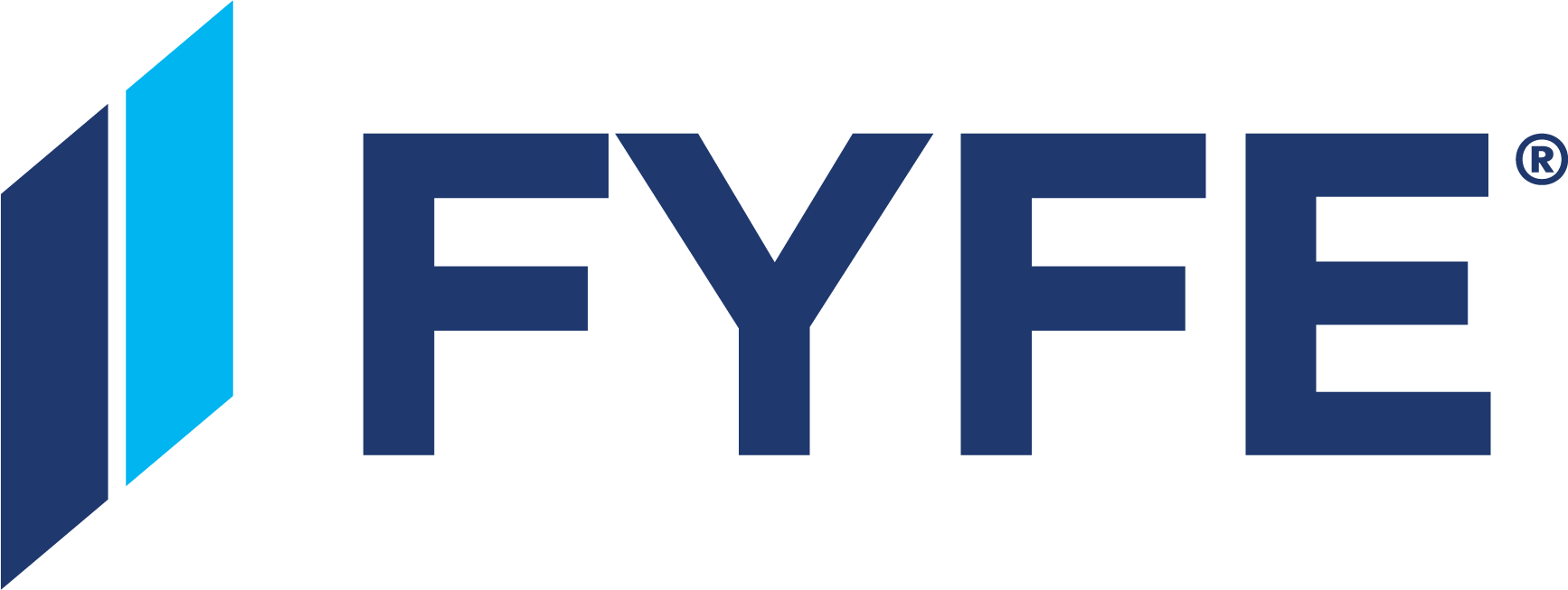PENSTOCK REHABILITATION, TYFO® SYSTEM
OVERVIEW
In 2012, power output dropped at the Mississippi River Power Corp.’s 4.6-MW Brian J. Gallagher Generating Station, on the Mississippi River in Ontario, Canada. The turbine was taken offline, inspected and found to be in good condition. The facility’s owner examined the 106-inch diameter penstock to discover it was partially blocked. The steel lining had delaminated in the rectangular transition section, causing the 3/8” thick steel liner plates to buckle and deform throughout the concrete-encased pipe.
Several repair alternatives were evaluated including welding internal steel plates and securing to the concrete encasement, as well as a slip-lined system with a grouted annulus. Total replacement of the concrete-encased penstock was not an option due to associated impacts such as the need to divert the river to facilitate installation. These conventional methods were all ruled out due to excessive costs, extended unit downtime, safety concerns associated with handling and installing large steel ’patch’ plates and extensive welding in a confined space, and loss of net flow area due to slip-lining impacting unit efficiencies. A carbon fiber-reinforced polymer (CFRP) solution, manufactured by Fyfe®, was ultimately chosen as the preferred solution to provide a fully structural, standalone rehabilitation solution.
The 106” diameter penstock’s CFRP liner was designed according to requirements from the American Water Works Association (AWWA C305). The CFRP liner resists the effects of the internal positive pressure, internal negative pressure, external groundwater pressure and temperature gradients without relying on any strength contribution from the encasement. The top & bottom portions of the rectangular transition region, near the intake structure, were designed for the CFRP to act compositely with the reinforced concrete section as a one-way slab to resist the combined effects of external groundwater pressure and internal negative pressure in flexure. To ensure the composite action in the transition region, the flat panels (top, bottom and walls) required the securing of the FRP. This was achieved by using carbon fiber anchors installed in the concrete. This assisted in the reduction of debonding from the concrete substrate. The carbon fiber anchors were installed in an array and splayed out onto the CFRP fiber to properly secure it to the concrete substate.
The general requirements of the American Concrete Institute’s 440.2R-08 guide were followed for flexural strengthening with additional limit states investigated, such as CFRP debonding, steel reinforcement yielding and concrete crushing.
PROJECT DETAILS
Project: Penstock Rehabilitation Using CFRP
Location: Almonte, Ontario, Canada
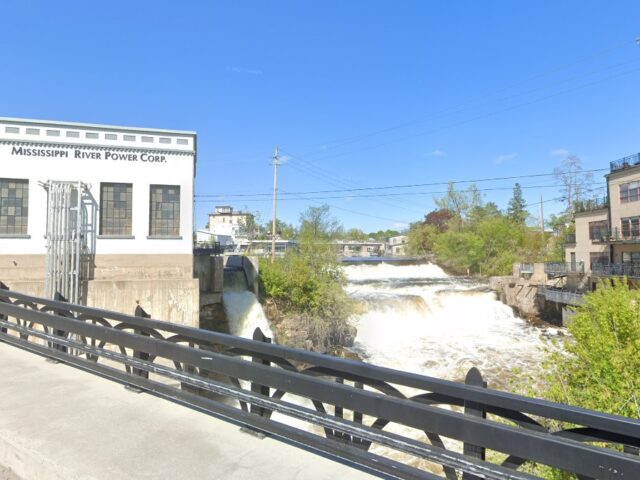
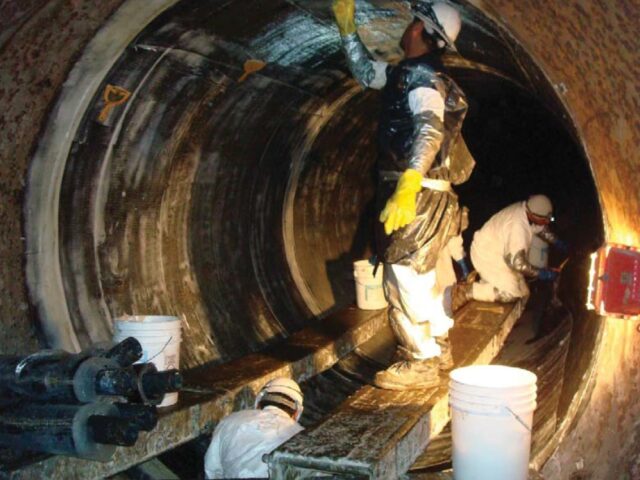
Completing the Fyfe Tyfo FRP System Installation
Once Mississippi River Power approved the liner design, installation of Fyfe’s Tyfo FRP system was completed by a certified FRP pipe applicator, Fibrwrap Construction. Prior to the FRP application, the owner removed the failed steel liner system, certified applicator crews hydroblasted all concrete surfaces that required repair to achieve the minimum ICRI concrete surface profile (CSP) level-3. This ensured exposure of the concrete’s coarse aggregate so that the surface was be void of latent materials. The FRP materials were then applied with an epoxy using the wet layup method. The repair solution included Tyfo SEH 51A (GFRP) on steel surfaces at liner interface locations, and Tyfo SCH 41-2X (CFRP) in all other areas for primary strengthening.
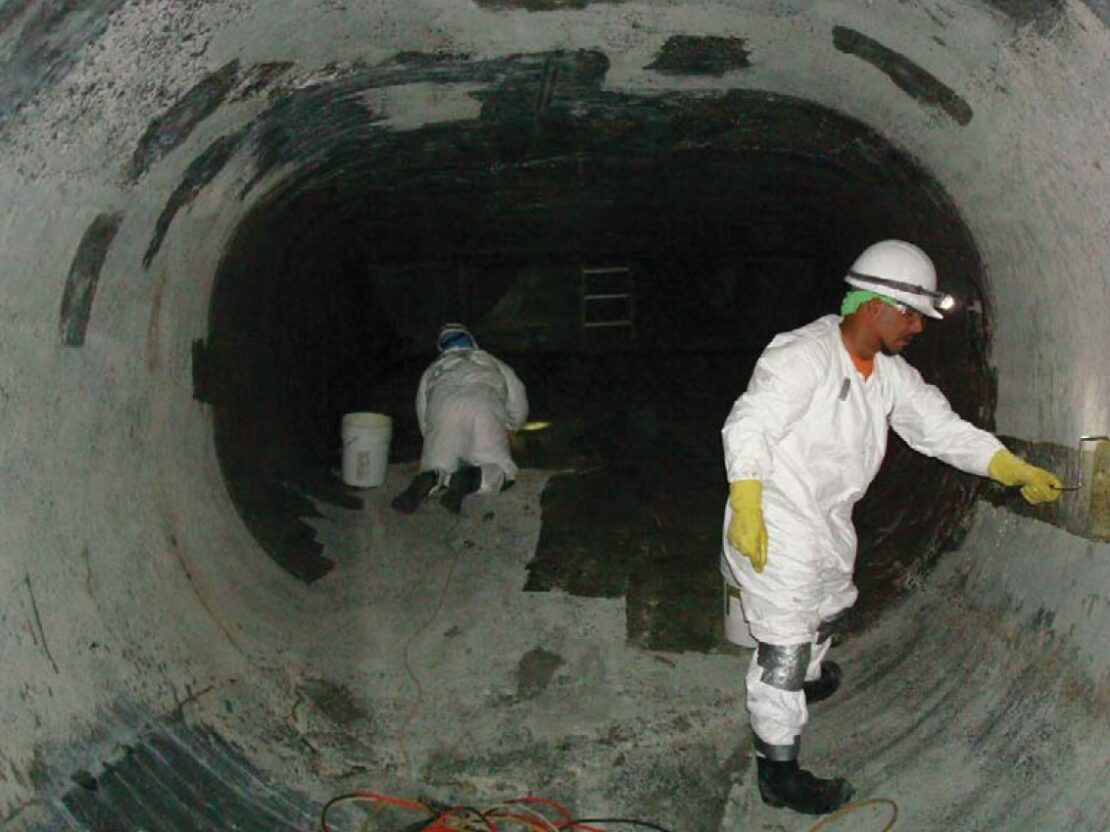
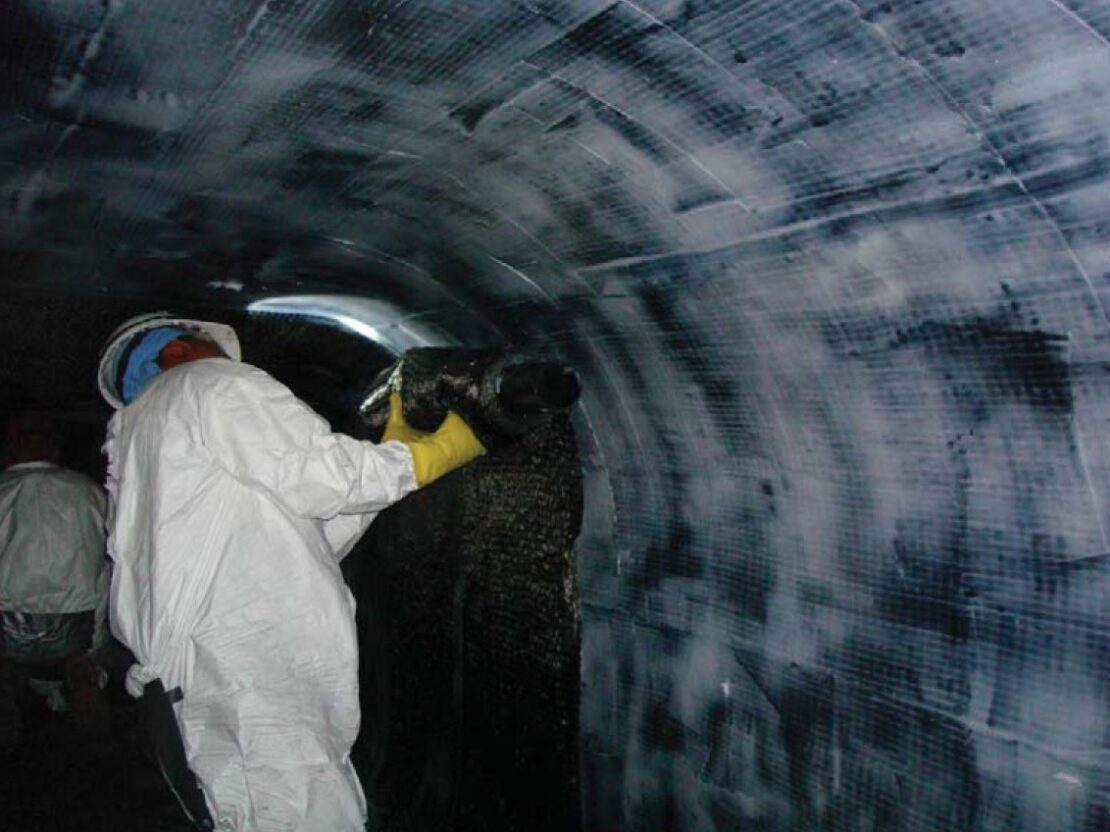
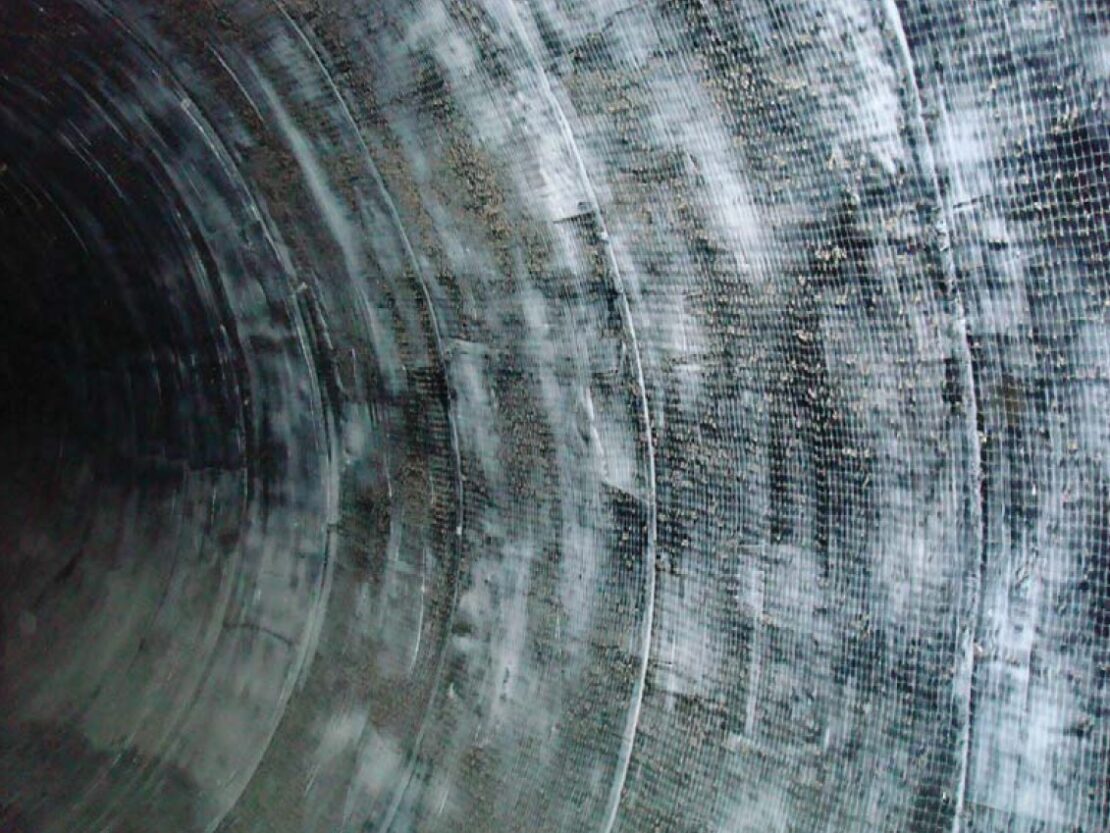
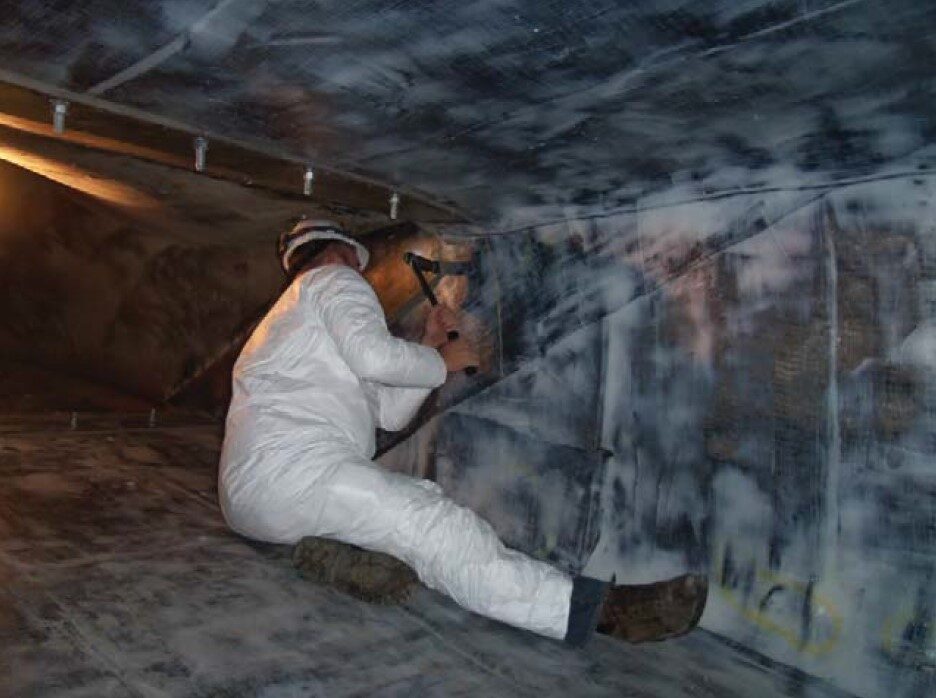
The Challenges faced during the installation of the Tyfo System
The project faced a variety of challenges during the project including leaks and water infiltration. Eliminating these leaks was critical to the success of this project, so leaks were repaired prior to installation, and water infiltration was addressed throughout the course of installation.
Due to the rectangular transition cross-section, a unique end termination was developed using stainless steel anchors embedded in concrete with clamp bars to protect the leading edge of the FRP fiber system and prevent water from migrating behind. The repair’s end termination in the 106” diameter liner used a conventional WEKO seal common in most pipe repairs.
Field quality inspections confirmed the prepared surface profile and insured adequate bond could be developed between the concrete substrate and FRP laminate after adhesion testing. Together with the engineered, end termination detailing and installed CFRP anchors, the CFRP repairs will provide a structural liner capable of resisting the design pressures without water migrating behind the liner and buckling. The FRP solution will provide several decades of service life and continued power generation for the facility.

